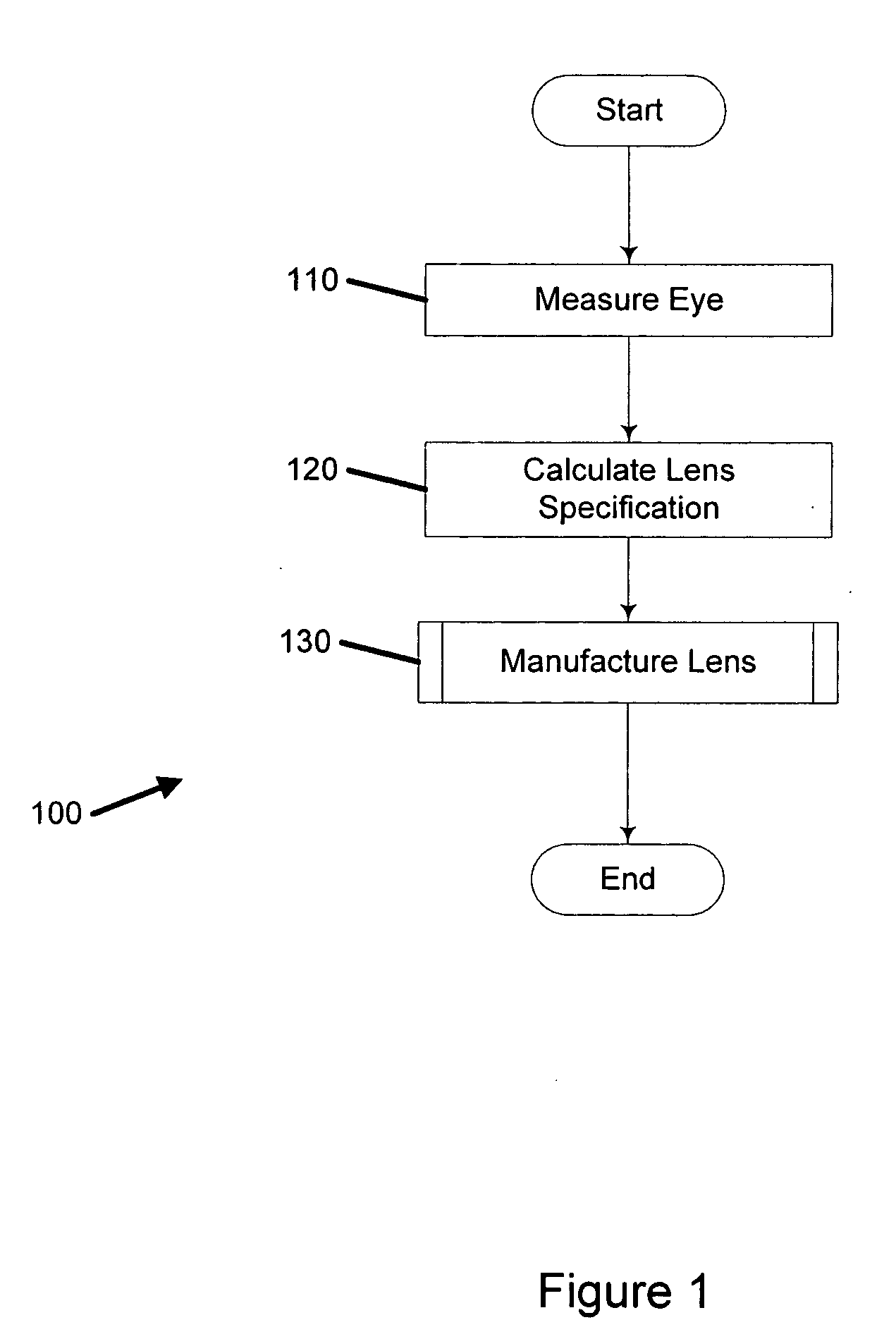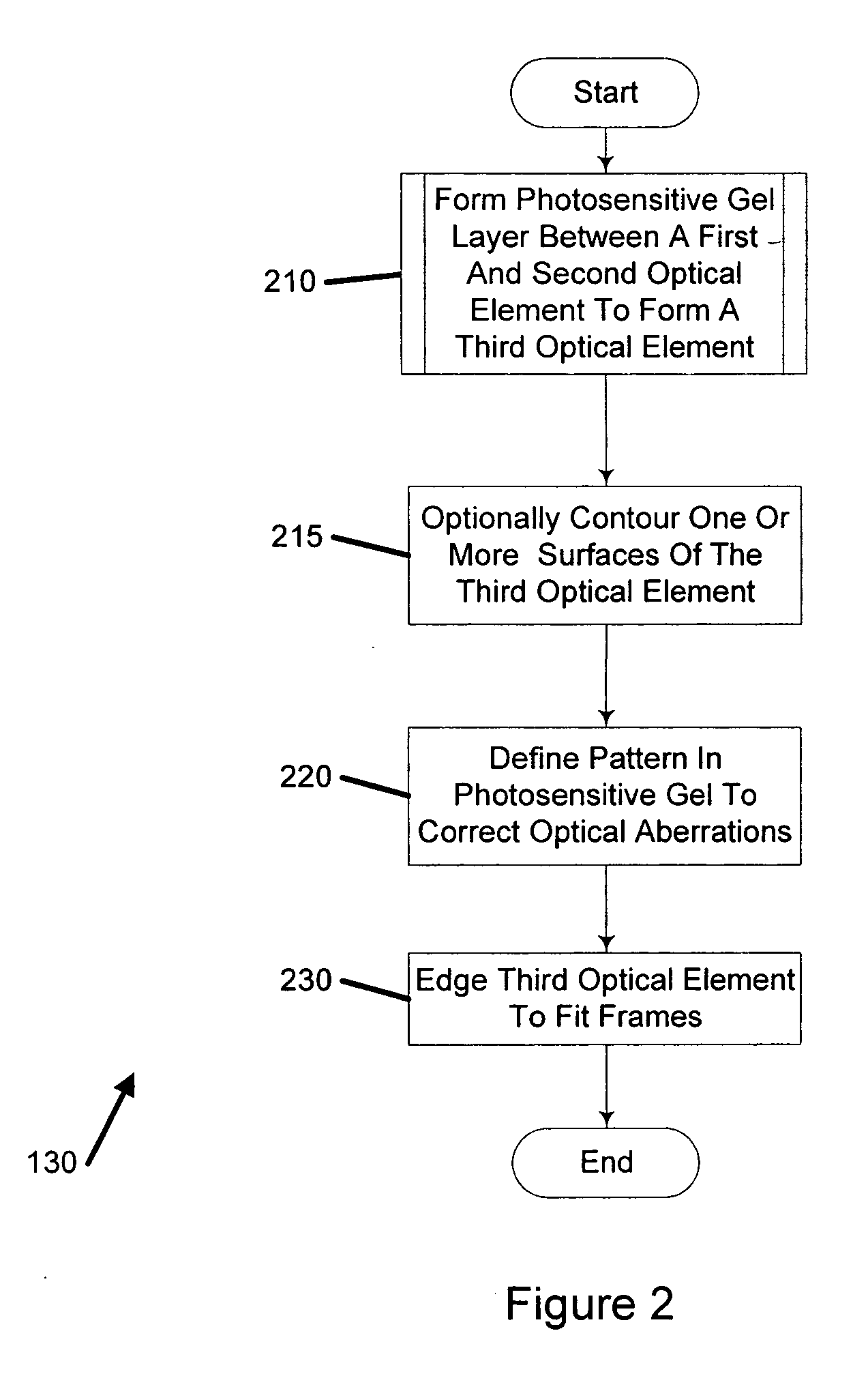System for manufacturing an optical lens
a manufacturing system and optical lens technology, applied in the field of manufacturing optical lenses, can solve the problems of reducing the optical performance of the eye, blurring vision, and limited correction of blurred vision by fitting patients with lenses
- Summary
- Abstract
- Description
- Claims
- Application Information
AI Technical Summary
Benefits of technology
Problems solved by technology
Method used
Image
Examples
Embodiment Construction
” one will understand how the features of this invention provide advantages that include convenient and economical methods of manufacturing optical lens and lens blanks.
[0007] One embodiment is a system for customizing vision correction. The system includes a measurement system configured to measure patient's vision parameters and to create measured optical aberration data. The system further includes a calculation system configured to receive the measured vision parameters and optical aberration data and to determine a lens definition based on the vision parameters and measured optical aberration data. The system further includes a fabrication system configured to produce a correcting lens based on the lens definition wherein the lens definition comprises a correction of at least one high order aberration.
[0008] Another embodiment is a method of customizing vision correction. The method includes measuring optical aberration data of a patient's eye. The method further includes calc...
PUM
| Property | Measurement | Unit |
|---|---|---|
| thickness | aaaaa | aaaaa |
| thick | aaaaa | aaaaa |
| temperature | aaaaa | aaaaa |
Abstract
Description
Claims
Application Information
 Login to View More
Login to View More - R&D
- Intellectual Property
- Life Sciences
- Materials
- Tech Scout
- Unparalleled Data Quality
- Higher Quality Content
- 60% Fewer Hallucinations
Browse by: Latest US Patents, China's latest patents, Technical Efficacy Thesaurus, Application Domain, Technology Topic, Popular Technical Reports.
© 2025 PatSnap. All rights reserved.Legal|Privacy policy|Modern Slavery Act Transparency Statement|Sitemap|About US| Contact US: help@patsnap.com



